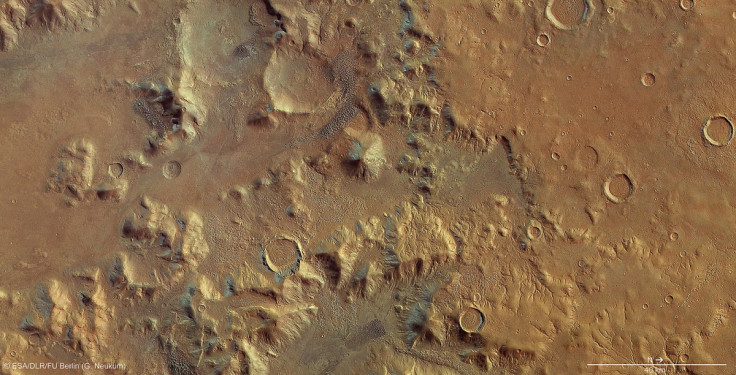Life on Mars: Antarctic fungi and European lichens survive on ISS after 'exposure to Mars'

Fungi from Antarctica has survived for 18 months on the International Space Station (ISS) under 'Mars-like conditions', offering new information about the search for life on the planet. Researchers wanted to see if life could exist in the harsh conditions of the Red Planet, and found that 60% of fungi cells tested made it through 18 months of intense pressure and huge temperature fluctuations.
The research, published in the journal Astrobiology, used some of Earth's most tolerant and resistant species in the investigation: two species of cryptoendolithic fungi (Cryomuces anarcticus and Cryomyces minteri) from Antarctica's McMurdo Dry Valleys – a particularly dry, cold and windy part of the world – and two species of European lichen from Spain and Austria (Rhizocarpon geographicum and Xanthoria elegans), which tend to exist high up on mountain tops.
"The most relevant outcome was that more than 60% of the cells of the endolithic communities studied remained intact after 'exposure to Mars'," said Rosa de la Torre Noetzel, researcher on the study. "Or rather, the stability of their cellular DNA was still high."
The results of the study have helped scientists to assess how life could survive on Mars as the search for microorganisms on its surface continues. While humans have not been able to grow potatoes on Mars yet – just like Matt Damon in the in 2015 film The Martian – the findings show that photosynthetic organisms could theoretically live on Earth's neighbouring planet.
After collecting the samples from Antarctica, Spain and Austria in 2014, they placed the fungi and lichens in small boxes and sent them up to the ISS in a European Space Agency investigation known as EXPOSE-E. While there, the samples were placed in an atmosphere of 95% carbon dioxide – 94.96% higher in the gas than the atmosphere of Earth – and a pressure of 1,000 pascals – roughly the equivalent of being 10m under water. The study also used huge temperature changes, ranging from -21.5 to 59.6 degrees Celsius.
After 18 months, results for the fungi and lichens were both positive: both lichen species recorded double the metabolic activity they showed on Earth. The Antarctic fungi kept 60% of its cells overall, and 35% of total fungal cells even kept their membrane intact – protecting precious DNA.
De la Torre said: "The results help to assess the survival ability and long-term stability of microorganisms and bioindicators [a living organism that scientist use to see how similar species' survive in the environment] on the surface of Mars – information which becomes fundamental and relevant for future experiments centred around the search for life on the red planet."
© Copyright IBTimes 2025. All rights reserved.






















